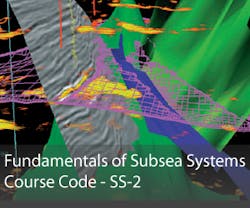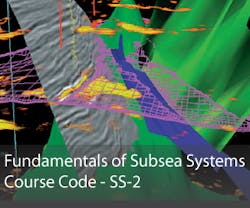An overview of subsea components and how they are integrated into field architecture is provided during this 5-day course. Individuals will develop a basic understanding of the various subsea components used in all water depths, from relatively shallow to ultra deepwater. The participants will all learn how the components are integrated into subsea field developments which will accelerate learning and productivity. Installation and working underwater are emphasized as key drivers in subsea design. The course emphasizes a systems approach to design. Individual and group exercises are used throughout the course including a "red thread" exercise to develop field architecture recommendations, basic component selection, and high level project execution plans for a subsea development. Course instructors are experienced offshore managers.
Technical staff that are beginning or transitioning into the design, construction, and operation of subsea systems. Non-technical staff working with a subsea development team will benefit by developing an awareness of subsea systems.
You will Learn:
- Recognize the integrated nature of field architecture, system design, and component selection
- Identify appropriate applications for subsea systems
- Identify the main subsea components, their functions, strengths, weaknesses and interfaces from the well to the production facility
- Understand key design, construction, and installation issues
- Describe basic operating and maintenance considerations
- Understand the key steps from drilling through startup for the design, fabrication, testing, installation and operation
- Understand the importance of an integrated approach to design, flow assurance, installation, and life-cycle considerations
Course Content:
- Applications for subsea systems
- Flow assurance considerations in system design and configuration
- Field architecture considerations
- Subsea component descriptions and functions
- Fabrication, testing, installation, commissioning, and operational issues
- Production, maintenance, and repair considerations




